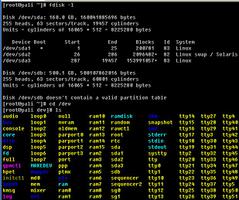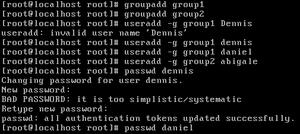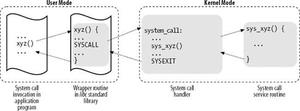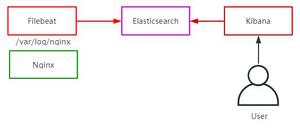linux系统引导过程

linux系统引导过程">linux系统引导过程
linux-0.11引导时,将依次运行BIOS程序、bootsect.s、setup.s和head.s,完成引导过程后进入到main函数运行。BIOS完成硬件的检查与初始化等工作后,从硬盘的MBR中读取bootsect代码;bootsect程序主要用于读取setup和system模块(包含head.s)代码到内存中,然后跳转到setup执行;setup首先读取内存、硬盘等设备参数到内存中供后续程序使用,然后设置gdt、idt表后,最后设置机器进入保护模式并跳转到head继续执行;head首先进一步完善gdt、idt表的设置,然后构建页目录和页表并启动分页内存管理,最后跳转到main函数执行。
BIOS
BIOS主要过程:
- 当电脑的电源开启后,BIOS程序会从主板的ROM芯片运行;
- BIOS进行加电自检(POST),测试和初始化CPU、RAM、DMA、芯片组、键盘、软盘、硬盘等设备;
- BIOS从引导设备(硬盘、软盘、光盘等)的主引导记录(MBR)中加载引导程序,再由引导程序加载操纵系统。
BIOS中断调用:
BIOS还为操作系统提供了运行时服务,即BIOS中断调用,中断可通过汇编int指令调用。操作系统依赖BIOS提供的中断调用(输出/输出中断调用)加载内核,然后由内核将系统从16位实模式转换到32位保护模式运行。
BIOS中断向量表:
中断 描述
INT 00h
CPU:除零错,或商不合法时触发
INT 01h
CPU:单步陷阱,TF标记为打开状态时,每条指令执行后触发
INT 02h
CPU:非可屏蔽中断,如引导自我测试时发生内存错误。
INT 03h
CPU:第一个未定义的中断向量,约定俗成仅用于调试程序
INT 04h
CPU:算数溢出。通常由INTO指令在置溢出位时触发。
INT 05h
在按下Shift-Print Screen或BOUND指令检测到范围异常时触发。
INT 06h
CPU:非法指令。
INT 07h
CPU:没有数学协处理器时尝试执行浮点指令触发。
INT 08h
IRQ0:可编程中断控制器每 55 毫秒触发一次,即每秒 18.2 次。
INT 09h
IRQ1:每次键盘按下、按住、释放。
INT 0Ah
IRQ2:
INT 0Bh
IRQ3:COM2/COM4。
INT 0Ch
IRQ4:COM1/COM3。
INT 0Dh
IRQ5:硬盘控制器(PC/XT 下)或 LPT2。
INT 0Eh
IRQ6:需要时由软盘控制器调用。
INT 0Fh
IRQ7:LPT1。
INT 10h
显示服务 - 由BIOS或操作系统设定以供软件调用。AH=00h设定显示模式AH=01h设定游标形态AH=02h设置光标位置AH=03h获取光标位置与形态AH=04h获取光标位置AH=05h设置显示页AH=06h清除或滚动栏画面(上)AH=07h清除或滚动栏画面(下)AH=08h读取游标处字符与属性AH=09h更改游标处字符与属性AH=0Ah更改游标处字符AH=0Bh设定边界颜色AH=0Eh在TTY模式下写字符AH=0Fh获取目前显示模式AH=13h写字符串
INT 11h
返回设备列表。
INT 12h
获取常规内存容量。
INT 13h
低端磁盘服务。AH=00h复位磁盘驱动器。AH=01h检查磁盘驱动器状态。AH=02h读扇区。AH=03h写扇区。AH=04h校验扇区。AH=05h格式化磁道。AH=08h获取驱动器参数。AH=09h初始化硬盘驱动器参数。AH=0Ch寻道。AH=0Dh复位硬盘控制器。AH=15h获取驱动器类型。AH=16h获取软驱中盘片的状态。
INT 14h
串口通信例程。AH=00h初始化串口。AH=01h写出字符。AH=02h读入字符。AH=03h状态。
INT 15h
其它(系统支持例程)。AH=4FH键盘拦截。AH=83H事件等待。AH=84H读游戏杆。AH=85HSysRq 键。AH=86H等待。AH=87H块移动。AH=88H获取扩展内存容量。AH=C0H获取系统参数。AH=C1H获取扩展 BIOS 数据区块。AH=C2H指针设备功能。AH=E8h, AL=01h (AX = E801h)获取扩展内存容量(自从 1994 年引入的新功能),可获取到 64MB 以上的内存容量。AH=E8h, AL=20h (AX = E820h)查询系统地址映射。该功能取代了 AX=E801h 和 AH=88h。
INT 16h
键盘通信例程。AH=00h读字符。AH=01h读输入状态。AH=02h读 Shift 键(修改键)状态。AH=10h读字符(增强版)。AH=11h读输入状态(增强版)。AH=12h读 Shift 键(修改键)状态(增强版)。
INT 17h
打印服务。AH=00h打印字符。AH=01h初始化打印机。AH=02h检查打印机状态。
INT 18h
执行磁带上的 BASIC 程序:“真正的”IBM 兼容机在 ROM 里内置 BASIC 程序,当引导失败时由 BIOS 调用此例程解释执行。(例:打印“Boot disk error. Replace disk and press any key to continue...”这类提示信息)
INT 19h
加电自检之后加载操作系统。
INT 1Ah
实时钟服务。AH=00h读取实时钟。AH=01h设置实时钟。AH=02h读取实时钟时间。AH=03h设置实时钟时间。AH=04h读取实时钟日期。AH=05h设置实时钟日期。AH=06h设置实时钟闹铃。AH=07h重置实时钟闹铃。
INT 1Bh
Ctrl+Break,由 IRQ 9 自动调用。
INT 1Ch
预留,由 IRQ 8 自动调用。
INT 1Dh
不可调用:指向视频参数表(包含视频模式的数据)的指针。
INT 1Eh
不可调用:指向软盘模式表(包含关于软驱的大量信息)的指针。
INT 1Fh
不可调用:指向视频图形字符表(包含从 80h 到 FFh 的 ASCII 字符的数据)的信息。
INT 41h
地址指针:硬盘参数表(第一硬盘)。
INT 46h
地址指针:硬盘参数表(第二硬盘)。
INT 4Ah
实时钟在闹铃时调用。
INT 70h
IRQ8:由实时钟调用。
INT 74h
IRQ12:由鼠标调用
INT 75h
IRQ13:由数学协处理器调用。
INT 76h
IRQ14:由第一个 IDE 控制器所调用
INT 77h
IRQ15:由第二个 IDE 控制器所调用
bootsect.s
bootsect主要过程:
- bootsect被bios-startup加载到0x7c00内存处,然后bois-start跳转到bootsect.s开始执行;
- bootsect将自身代码从0x7c00复制到0x90000处,并跳转到复制后的地址处继续往下执行;
- bootsect读取setup到0x90200处,读取system到0x10000处;
- bootsect跳转到setup执行
bootsect代码:
!! SYS_SIZE is the number of clicks (16 bytes) to be loaded.
! 0x3000 is 0x30000 bytes = 196kB, more than enough for current
! versions of linux
!
SYSSIZE = 0x3000
!
! bootsect.s (C) 1991 Linus Torvalds
!
! bootsect.s is loaded at 0x7c00 by the bios-startup routines, and moves
! iself out of the way to address 0x90000, and jumps there.
!
! It then loads "setup" directly after itself (0x90200), and the system
! at 0x10000, using BIOS interrupts.
!
! NOTE! currently system is at most 8*65536 bytes long. This should be no
! problem, even in the future. I want to keep it simple. This 512 kB
! kernel size should be enough, especially as this doesn"t contain the
! buffer cache as in minix
!
! The loader has been made as simple as possible, and continuos
! read errors will result in a unbreakable loop. Reboot by hand. It
! loads pretty fast by getting whole sectors at a time whenever possible.
.globl begtext, begdata, begbss, endtext, enddata, endbss
.text
begtext:
.data
begdata:
.bss
begbss:
.text
SETUPLEN = 4 ! nr of setup-sectors
BOOTSEG = 0x07c0 ! original address of boot-sector
INITSEG = 0x9000 ! we move boot here - out of the way
SETUPSEG = 0x9020 ! setup starts here
SYSSEG = 0x1000 ! system loaded at 0x10000 (65536).
ENDSEG = SYSSEG + SYSSIZE ! where to stop loading
! ROOT_DEV: 0x000 - same type of floppy as boot.
! 0x301 - first partition on first drive etc
ROOT_DEV = 0x306
entry start
start:
mov ax,#BOOTSEG
mov ds,ax
mov ax,#INITSEG
mov es,ax
mov cx,#256
sub si,si
sub di,di
rep
movw
jmpi go,INITSEG
go: mov ax,cs
mov ds,ax
mov es,ax
! put stack at 0x9ff00.
mov ss,ax
mov sp,#0xFF00 ! arbitrary value >>512
! load the setup-sectors directly after the bootblock.
! Note that "es" is already set up.
load_setup:
mov dx,#0x0000 ! drive 0, head 0
mov cx,#0x0002 ! sector 2, track 0
mov bx,#0x0200 ! address = 512, in INITSEG
mov ax,#0x0200+SETUPLEN ! service 2, nr of sectors
int 0x13 ! read it
jnc ok_load_setup ! ok - continue
mov dx,#0x0000
mov ax,#0x0000 ! reset the diskette
int 0x13
j load_setup
ok_load_setup:
! Get disk drive parameters, specifically nr of sectors/track
mov dl,#0x00
mov ax,#0x0800 ! AH=8 is get drive parameters
int 0x13
mov ch,#0x00
seg cs
mov sectors,cx
mov ax,#INITSEG
mov es,ax
! Print some inane message
mov ah,#0x03 ! read cursor pos
xor bh,bh
int 0x10
mov cx,#24
mov bx,#0x0007 ! page 0, attribute 7 (normal)
mov bp,#msg1
mov ax,#0x1301 ! write string, move cursor
int 0x10
! ok, we"ve written the message, now
! we want to load the system (at 0x10000)
mov ax,#SYSSEG
mov es,ax ! segment of 0x010000
call read_it
call kill_motor
! After that we check which root-device to use. If the device is
! defined (!= 0), nothing is done and the given device is used.
! Otherwise, either /dev/PS0 (2,28) or /dev/at0 (2,8), depending
! on the number of sectors that the BIOS reports currently.
seg cs
mov ax,root_dev
cmp ax,#0
jne root_defined
seg cs
mov bx,sectors
mov ax,#0x0208 ! /dev/ps0 - 1.2Mb
cmp bx,#15
je root_defined
mov ax,#0x021c ! /dev/PS0 - 1.44Mb
cmp bx,#18
je root_defined
undef_root:
jmp undef_root
root_defined:
seg cs
mov root_dev,ax
! after that (everyting loaded), we jump to
! the setup-routine loaded directly after
! the bootblock:
jmpi 0,SETUPSEG
! This routine loads the system at address 0x10000, making sure
! no 64kB boundaries are crossed. We try to load it as fast as
! possible, loading whole tracks whenever we can.
!
! in: es - starting address segment (normally 0x1000)
!
sread: .word 1+SETUPLEN ! sectors read of current track
head: .word 0 ! current head
track: .word 0 ! current track
read_it:
mov ax,es
test ax,#0x0fff
die: jne die ! es must be at 64kB boundary
xor bx,bx ! bx is starting address within segment
rp_read:
mov ax,es
cmp ax,#ENDSEG ! have we loaded all yet?
jb ok1_read
ret
ok1_read:
seg cs
mov ax,sectors
sub ax,sread
mov cx,ax
shl cx,#9
add cx,bx
jnc ok2_read
je ok2_read
xor ax,ax
sub ax,bx
shr ax,#9
ok2_read:
call read_track
mov cx,ax
add ax,sread
seg cs
cmp ax,sectors
jne ok3_read
mov ax,#1
sub ax,head
jne ok4_read
inc track
ok4_read:
mov head,ax
xor ax,ax
ok3_read:
mov sread,ax
shl cx,#9
add bx,cx
jnc rp_read
mov ax,es
add ax,#0x1000
mov es,ax
xor bx,bx
jmp rp_read
read_track:
push ax
push bx
push cx
push dx
mov dx,track
mov cx,sread
inc cx
mov ch,dl
mov dx,head
mov dh,dl
mov dl,#0
and dx,#0x0100
mov ah,#2
int 0x13
jc bad_rt
pop dx
pop cx
pop bx
pop ax
ret
bad_rt: mov ax,#0
mov dx,#0
int 0x13
pop dx
pop cx
pop bx
pop ax
jmp read_track
/*
* This procedure turns off the floppy drive motor, so
* that we enter the kernel in a known state, and
* don"t have to worry about it later.
*/
kill_motor:
push dx
mov dx,#0x3f2
mov al,#0
outb
pop dx
ret
sectors:
.word 0
msg1:
.byte 13,10
.ascii "Loading system ..."
.byte 13,10,13,10
.org 508
root_dev:
.word ROOT_DEV
boot_flag:
.word 0xAA55
.text
endtext:
.data
enddata:
.bss
endbss:
setup.s
setup主要过程:
- 获取光标位置、扩展内存大小、显卡页参数、等参数,并保存在内存0x90000-0x901FF处,以供内核相关程序使用。保存的参数如下:
- 将system代码从内存0x10000-0x8ffff处移动到0x00000-0x7ffff处。(system代码不超过512KB)
- 加载idt(中断描述符表)与gdt(全局描述符表),开启20位地址线;然后将机器的CR0控制寄存器的PE位置为1,使机器进入保护模式,并跳转到gdt表代码段的0偏移处运行,即运行System代码模块的head.s。
在setup执行阶段,gdt表中定义了一个代码段和一个数据段,两个段地址空间完全重叠,段地址基址为0x00000;ldt表未定义任何段。
setup.s代码:
!! setup.s (C) 1991 Linus Torvalds
!
! setup.s is responsible for getting the system data from the BIOS,
! and putting them into the appropriate places in system memory.
! both setup.s and system has been loaded by the bootblock.
!
! This code asks the bios for memory/disk/other parameters, and
! puts them in a "safe" place: 0x90000-0x901FF, ie where the
! boot-block used to be. It is then up to the protected mode
! system to read them from there before the area is overwritten
! for buffer-blocks.
!
! NOTE! These had better be the same as in bootsect.s!
INITSEG = 0x9000 ! we move boot here - out of the way
SYSSEG = 0x1000 ! system loaded at 0x10000 (65536).
SETUPSEG = 0x9020 ! this is the current segment
.globl begtext, begdata, begbss, endtext, enddata, endbss
.text
begtext:
.data
begdata:
.bss
begbss:
.text
entry start
start:
! ok, the read went well so we get current cursor position and save it for
! posterity.
mov ax,#INITSEG ! this is done in bootsect already, but...
mov ds,ax
mov ah,#0x03 ! read cursor pos
xor bh,bh
int 0x10 ! save it in known place, con_init fetches
mov [0],dx ! it from 0x90000.
! Get memory size (extended mem, kB)
mov ah,#0x88
int 0x15
mov [2],ax
! Get video-card data:
mov ah,#0x0f
int 0x10
mov [4],bx ! bh = display page
mov [6],ax ! al = video mode, ah = window width
! check for EGA/VGA and some config parameters
mov ah,#0x12
mov bl,#0x10
int 0x10
mov [8],ax
mov [10],bx
mov [12],cx
! Get hd0 data
mov ax,#0x0000
mov ds,ax
lds si,[4*0x41]
mov ax,#INITSEG
mov es,ax
mov di,#0x0080
mov cx,#0x10
rep
movsb
! Get hd1 data
mov ax,#0x0000
mov ds,ax
lds si,[4*0x46]
mov ax,#INITSEG
mov es,ax
mov di,#0x0090
mov cx,#0x10
rep
movsb
! Check that there IS a hd1 :-)
mov ax,#0x01500
mov dl,#0x81
int 0x13
jc no_disk1
cmp ah,#3
je is_disk1
no_disk1:
mov ax,#INITSEG
mov es,ax
mov di,#0x0090
mov cx,#0x10
mov ax,#0x00
rep
stosb
is_disk1:
! now we want to move to protected mode ...
cli ! no interrupts allowed !
! first we move the system to it"s rightful place
mov ax,#0x0000
cld ! "direction"=0, movs moves forward
do_move:
mov es,ax ! destination segment
add ax,#0x1000
cmp ax,#0x9000
jz end_move
mov ds,ax ! source segment
sub di,di
sub si,si
mov cx,#0x8000
rep
movsw
jmp do_move
! then we load the segment descriptors
end_move:
mov ax,#SETUPSEG ! right, forgot this at first. didn"t work :-)
mov ds,ax
lidt idt_48 ! load idt with 0,0
lgdt gdt_48 ! load gdt with whatever appropriate
! that was painless, now we enable A20
call empty_8042
mov al,#0xD1 ! command write
out #0x64,al
call empty_8042
mov al,#0xDF ! A20 on
out #0x60,al
call empty_8042
! well, that went ok, I hope. Now we have to reprogram the interrupts :-(
! we put them right after the intel-reserved hardware interrupts, at
! int 0x20-0x2F. There they won"t mess up anything. Sadly IBM really
! messed this up with the original PC, and they haven"t been able to
! rectify it afterwards. Thus the bios puts interrupts at 0x08-0x0f,
! which is used for the internal hardware interrupts as well. We just
! have to reprogram the 8259"s, and it isn"t fun.
mov al,#0x11 ! initialization sequence
out #0x20,al ! send it to 8259A-1
.word 0x00eb,0x00eb ! jmp $+2, jmp $+2
out #0xA0,al ! and to 8259A-2
.word 0x00eb,0x00eb
mov al,#0x20 ! start of hardware int"s (0x20)
out #0x21,al
.word 0x00eb,0x00eb
mov al,#0x28 ! start of hardware int"s 2 (0x28)
out #0xA1,al
.word 0x00eb,0x00eb
mov al,#0x04 ! 8259-1 is master
out #0x21,al
.word 0x00eb,0x00eb
mov al,#0x02 ! 8259-2 is slave
out #0xA1,al
.word 0x00eb,0x00eb
mov al,#0x01 ! 8086 mode for both
out #0x21,al
.word 0x00eb,0x00eb
out #0xA1,al
.word 0x00eb,0x00eb
mov al,#0xFF ! mask off all interrupts for now
out #0x21,al
.word 0x00eb,0x00eb
out #0xA1,al
! well, that certainly wasn"t fun :-(. Hopefully it works, and we don"t
! need no steenking BIOS anyway (except for the initial loading :-).
! The BIOS-routine wants lots of unnecessary data, and it"s less
! "interesting" anyway. This is how REAL programmers do it.
!
! Well, now"s the time to actually move into protected mode. To make
! things as simple as possible, we do no register set-up or anything,
! we let the gnu-compiled 32-bit programs do that. We just jump to
! absolute address 0x00000, in 32-bit protected mode.
mov ax,#0x0001 ! protected mode (PE) bit
lmsw ax ! This is it!
jmpi 0,8 ! jmp offset 0 of segment 8 (cs)
! This routine checks that the keyboard command queue is empty
! No timeout is used - if this hangs there is something wrong with
! the machine, and we probably couldn"t proceed anyway.
empty_8042:
.word 0x00eb,0x00eb
in al,#0x64 ! 8042 status port
test al,#2 ! is input buffer full?
jnz empty_8042 ! yes - loop
ret
gdt:
.word 0,0,0,0 ! dummy
.word 0x07FF ! 8Mb - limit=2047 (2048*4096=8Mb)
.word 0x0000 ! base address=0
.word 0x9A00 ! code read/exec
.word 0x00C0 ! granularity=4096, 386
.word 0x07FF ! 8Mb - limit=2047 (2048*4096=8Mb)
.word 0x0000 ! base address=0
.word 0x9200 ! data read/write
.word 0x00C0 ! granularity=4096, 386
idt_48:
.word 0 ! idt limit=0
.word 0,0 ! idt base=0L
gdt_48:
.word 0x800 ! gdt limit=2048, 256 GDT entries
.word 512+gdt,0x9 ! gdt base = 0X9xxxx
.text
endtext:
.data
enddata:
.bss
endbss:
head.s
head.s被编译生成目标文件后,会内核其它程序一起被链接为system模块,head.s代码位于system模块最开始的部分,也是system模块最先执行的程序代码。system代码被bootsect程序加载到0x10000地址处,并由setup程序移动到0地址处,因此,head.s代码位于0地址处。setup执行完后,将机器设置位保护模式,并跳转到head.s代码处执行,head.s是32位程序。
head主要过程:
- 设置idt:为idt表设置256个表项,每个表项被初始化指向默认的中断处理过程(ignore_int)。ignore_int过程不执行任何具有实际意义的操作,相当于空过程。后续执行的内核程序可根据需要在idt表中注册中断门、陷阱门或系统门。
- 设置gdt:为gdt表设置256个表项,为使用的表项初始为0值。gdt表象可指向代码段、数据段、LDT,以及任务状态段。后续执行的内核程序可根据需要在gdt中设置相关段。
- 设置页目录和页表:页目录和页表被放置在0地址处,然后将页目录表地址写入CR3寄存器,并置CR0寄存器的PG位为1,PG位为1意为启用分页管理机制。
- 跳转到mian函数执行
head.s代码:
/* * linux/boot/head.s
*
* (C) 1991 Linus Torvalds
*/
/*
* head.s contains the 32-bit startup code.
*
* NOTE!!! Startup happens at absolute address 0x00000000, which is also where
* the page directory will exist. The startup code will be overwritten by
* the page directory.
*/
.text
.globl _idt,_gdt,_pg_dir,_tmp_floppy_area
_pg_dir:
startup_32:
movl $0x10,%eax
mov %ax,%ds
mov %ax,%es
mov %ax,%fs
mov %ax,%gs
lss _stack_start,%esp
call setup_idt
call setup_gdt
movl $0x10,%eax # reload all the segment registers
mov %ax,%ds # after changing gdt. CS was already
mov %ax,%es # reloaded in "setup_gdt"
mov %ax,%fs
mov %ax,%gs
lss _stack_start,%esp
xorl %eax,%eax
1: incl %eax # check that A20 really IS enabled
movl %eax,0x000000 # loop forever if it isn"t
cmpl %eax,0x100000
je 1b
/*
* NOTE! 486 should set bit 16, to check for write-protect in supervisor
* mode. Then it would be unnecessary with the "verify_area()"-calls.
* 486 users probably want to set the NE (#5) bit also, so as to use
* int 16 for math errors.
*/
movl %cr0,%eax # check math chip
andl $0x80000011,%eax # Save PG,PE,ET
/* "orl $0x10020,%eax" here for 486 might be good */
orl $2,%eax # set MP
movl %eax,%cr0
call check_x87
jmp after_page_tables
/*
* We depend on ET to be correct. This checks for 287/387.
*/
check_x87:
fninit
fstsw %ax
cmpb $0,%al
je 1f /* no coprocessor: have to set bits */
movl %cr0,%eax
xorl $6,%eax /* reset MP, set EM */
movl %eax,%cr0
ret
.align 2
1: .byte 0xDB,0xE4 /* fsetpm for 287, ignored by 387 */
ret
/*
* setup_idt
*
* sets up a idt with 256 entries pointing to
* ignore_int, interrupt gates. It then loads
* idt. Everything that wants to install itself
* in the idt-table may do so themselves. Interrupts
* are enabled elsewhere, when we can be relatively
* sure everything is ok. This routine will be over-
* written by the page tables.
*/
setup_idt:
lea ignore_int,%edx
movl $0x00080000,%eax
movw %dx,%ax /* selector = 0x0008 = cs */
movw $0x8E00,%dx /* interrupt gate - dpl=0, present */
lea _idt,%edi
mov $256,%ecx
rp_sidt:
movl %eax,(%edi)
movl %edx,4(%edi)
addl $8,%edi
dec %ecx
jne rp_sidt
lidt idt_descr
ret
/*
* setup_gdt
*
* This routines sets up a new gdt and loads it.
* Only two entries are currently built, the same
* ones that were built in init.s. The routine
* is VERY complicated at two whole lines, so this
* rather long comment is certainly needed :-).
* This routine will beoverwritten by the page tables.
*/
setup_gdt:
lgdt gdt_descr
ret
/*
* I put the kernel page tables right after the page directory,
* using 4 of them to span 16 Mb of physical memory. People with
* more than 16MB will have to expand this.
*/
.org 0x1000
pg0:
.org 0x2000
pg1:
.org 0x3000
pg2:
.org 0x4000
pg3:
.org 0x5000
/*
* tmp_floppy_area is used by the floppy-driver when DMA cannot
* reach to a buffer-block. It needs to be aligned, so that it isn"t
* on a 64kB border.
*/
_tmp_floppy_area:
.fill 1024,1,0
after_page_tables:
pushl $0 # These are the parameters to main :-)
pushl $0
pushl $0
pushl $L6 # return address for main, if it decides to.
pushl $_main
jmp setup_paging
L6:
jmp L6 # main should never return here, but
# just in case, we know what happens.
/* This is the default interrupt "handler" :-) */
int_msg:
.asciz "Unknown interrupt
"
.align 2
ignore_int:
pushl %eax
pushl %ecx
pushl %edx
push %ds
push %es
push %fs
movl $0x10,%eax
mov %ax,%ds
mov %ax,%es
mov %ax,%fs
pushl $int_msg
call _printk
popl %eax
pop %fs
pop %es
pop %ds
popl %edx
popl %ecx
popl %eax
iret
/*
* Setup_paging
*
* This routine sets up paging by setting the page bit
* in cr0. The page tables are set up, identity-mapping
* the first 16MB. The pager assumes that no illegal
* addresses are produced (ie >4Mb on a 4Mb machine).
*
* NOTE! Although all physical memory should be identity
* mapped by this routine, only the kernel page functions
* use the >1Mb addresses directly. All "normal" functions
* use just the lower 1Mb, or the local data space, which
* will be mapped to some other place - mm keeps track of
* that.
*
* For those with more memory than 16 Mb - tough luck. I"ve
* not got it, why should you :-) The source is here. Change
* it. (Seriously - it shouldn"t be too difficult. Mostly
* change some constants etc. I left it at 16Mb, as my machine
* even cannot be extended past that (ok, but it was cheap :-)
* I"ve tried to show which constants to change by having
* some kind of marker at them (search for "16Mb"), but I
* won"t guarantee that"s all :-( )
*/
.align 2
setup_paging:
movl $1024*5,%ecx /* 5 pages - pg_dir+4 page tables */
xorl %eax,%eax
xorl %edi,%edi /* pg_dir is at 0x000 */
cld;rep;stosl
movl $pg0+7,_pg_dir /* set present bit/user r/w */
movl $pg1+7,_pg_dir+4 /* --------- " " --------- */
movl $pg2+7,_pg_dir+8 /* --------- " " --------- */
movl $pg3+7,_pg_dir+12 /* --------- " " --------- */
movl $pg3+4092,%edi
movl $0xfff007,%eax /* 16Mb - 4096 + 7 (r/w user,p) */
std
1: stosl /* fill pages backwards - more efficient :-) */
subl $0x1000,%eax
jge 1b
xorl %eax,%eax /* pg_dir is at 0x0000 */
movl %eax,%cr3 /* cr3 - page directory start */
movl %cr0,%eax
orl $0x80000000,%eax
movl %eax,%cr0 /* set paging (PG) bit */
ret /* this also flushes prefetch-queue */
.align 2
.word 0
idt_descr:
.word 256*8-1 # idt contains 256 entries
.long _idt
.align 2
.word 0
gdt_descr:
.word 256*8-1 # so does gdt (not that that"s any
.long _gdt # magic number, but it works for me :^)
.align 3
_idt: .fill 256,8,0 # idt is uninitialized
_gdt: .quad 0x0000000000000000 /* NULL descriptor */
.quad 0x00c09a0000000fff /* 16Mb */
.quad 0x00c0920000000fff /* 16Mb */
.quad 0x0000000000000000 /* TEMPORARY - don"t use */
.fill 252,8,0 /* space for LDT"s and TSS"s etc */
相关知识
设备号
linux0.11程序中的硬盘设备命名方式为主设备号+次设备号,常见的主设备号有:1-内存、2-磁盘、3-硬盘、4-ttyx、5-tty、6-并行口、7-非命名管道1。由于1个硬盘中可以有1—4个分区,因此1,硬盘还依据分区的不同用次设备号进行指定分区。因此硬盘的逻辑设备号由以下方式构成:设备号=主设备号*256+次设备号。
分段内存管理
32位保护模式下,linux-0.11使用分段管理内存。数据段和代码段描述信息被保存在gdt/ldt中,段描述信息称为段描述符,包含段基址、段限长、读写保护等信息。代码运行时,gdt/ldt表地址会被保存在GDTR/LDTR寄存器中。访问段时,可通过段寄存器中保存的段选择符(包含段的索引信息)访问gdt/ldt中的段描述符,读取段基址信息。获取段基址后,使用段基址加上偏移地址可计算出实际访问的内存地址。
程序代码段和数据段的描述符格式
主要信息包括段基址、段限长、描述符特权级(DPL)、读写访问保护等。
- 描述符特权级(DPL):描述了访问段需要的请求特权等级(RPL),当RPL<=DPL时,代码才可以访问段内容。
段选择符格式
包含描述符索引、表指示器(TI位)和请求者特权级(RPL位)。
- 描述符索引:GDT/LDT表的表项索引号。
- 表指示器(TI位):指定选择符引用的描述符表,值为0表示指定GDT表,值为1表示指定LDT表。
- 请求者特权级(RPL位):用于保护机制,Linux中有两个特权级,较高特权级的内核(RPL=0)代码和较低特权级的用户代码(RPL=3)。
相关寄存器
CR0:CR0中的PE位,指示是否启用保护模式,启用保护模式时,使用分段内存管理。
GDTR/LDTR:保存GDT/LDT表地址,使用lgdt/lldt指令加载GDT/LDT表地址到GDTR/LDTR寄存器中。
分页内存管理
保护模式下,启动分页内存管理后,经过分段机制计算得到的地址不再是物理地址,而是虚拟地址,拟地址由几个部分构成:虚拟地址=页目录项索引+页表项索引+页内偏移构成。根据页目录项索引和页表项索引查询页目录和页表后可获得物理页号,进一步可计算物理地址:物理地址=物理页号+业内偏移。
页目录与页表
页目录:存储包括页表地址在内的页表描述信息,每个页表描述信息为一个页目录项。
页表:存储包括物理页地址在内的物理页描述信息,每个页表描述信息为一个页表项。
线性地址到物理地址之间的变换
相关寄存器
CR0:CR0中的PG位指示是否开启分页机制。
CR3:存储页目录地址。
内存管理单元(MMU)
内存管理单元可以完成虚拟地址到物理地址的转换,是一种硬件实现。
[参考资料]
《linux内核完全注释》
以上是 linux系统引导过程 的全部内容, 来源链接: utcz.com/z/519788.html









